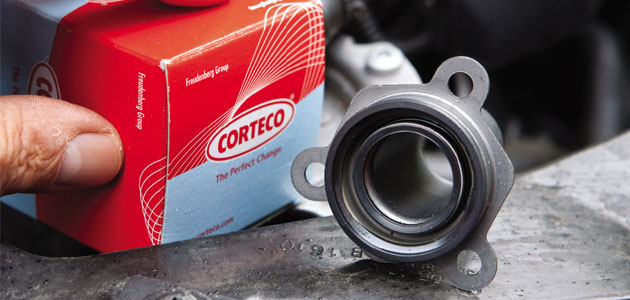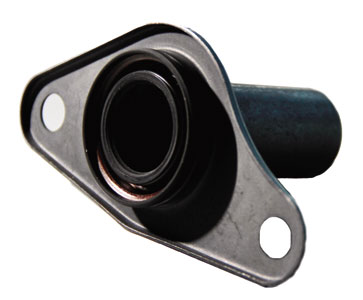
Clutch guide tubes (guide bushes, clutch input shaft sleeves or clutch quills as they are also known) are being sold in increasing numbers. They facilitate the movement of the thrust bearing, which slides along its length, engaging or disengaging the clutch mechanism. Suitably lubricated with the appropriate grease on the flywheel side, they will continue to work perfectly, provided that sufficient attention has been given to a second and very important function of the guide tube on the gearbox side.

Sealing function
The guide tube’s other major function is to provide a perfect seal between the gearbox and the drive shaft. Invert the guide tube and take a look inside. It is an oil seal – and a very reliable one at that. It protects the clutch from ingress by gearbox oil.
Once oil enters the clutch, slippage takes place. Any excessive slip between the clutch and the flywheel causes overheating. Soaring clutch temperatures increase the potential for oil seal leaks. In recent technical workouts, held in association with motor factors, few installers appreciated the installation conditions that are required in order to preserve the perfect oil seal.
Technical awareness
Professional mechanics are meticulous when it comes to flywheel side preparation, because the need for free movement and application of the appropriate grease is essential. Care and attention to detail is just as vital on the gearbox side, when the oil seal is installed.
Dust from the clutch will settle on the drive shaft. Unless dust is removed, contamination of the sealing lip will take place. An appropriate seal installation tool must be used to align and mount the seal. If not, damage to the seal lip is a likely consequence. In addition to supplying the guide tubes, Corteco also supplies a seal removing tool and a seal installation kit.
Installer tips
Corteco points out that where issues have arisen with guide tubes, they are invariably related to:
- Contamination of the seal
- Incorrect seating of the seal
Installer guide – Almark Garage

Almark garage, of Wirksworth in Derbyshire, installed guide tubes on four French models last month.
“Once there’s a groove on there, you start having issues with the bearing. It won’t release or engage properly, so it’s always been best to fit a new one,” says proprietor Mark Swift.
He thinks there are various reasons why they are not replaced every time by some installers. Availability is key: “It’s all about having the part once the clutch is out. Guide tubes are not part of the clutch kits. You have to get them separately and not every motor factor has them. I suppose it can make a clutch price seem a bit more expensive if competition is a concern. Price sensitivity can be an issue.”
Almark’s local Corteco distributor supplies the guide tubes with each appropriate clutch kit, he says.









